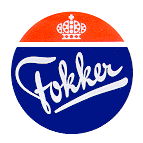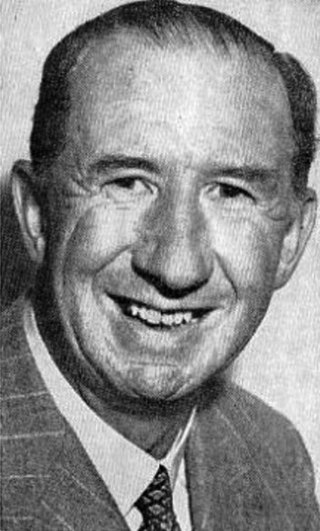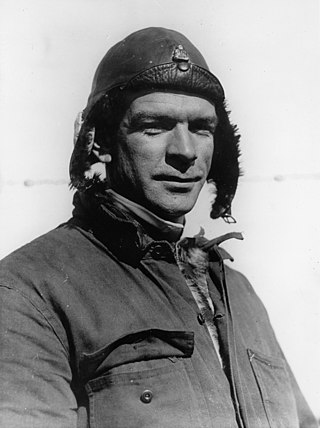
Fokker, legally N.V. Koninklijke Nederlandse Vliegtuigenfabriek Fokker, was a Dutch aircraft manufacturer named after its founder, Anthony Fokker. The company operated under several different names. It was founded in 1912 in Berlin, Germany, and became famous for its fighter aircraft in World War I. In 1919 the company moved its operations to the Netherlands.

Nevil Shute Norway was an English novelist and aeronautical engineer who spent his later years in Australia. He used his full name in his engineering career and Nevil Shute as his pen name, in order to protect his engineering career from inferences by his employers (Vickers) or from fellow engineers that he was '"not a serious person" or from potentially adverse publicity in connection with his novels, which included On the Beach and A Town Like Alice.

The Airspeed AS.10 Oxford is a twin-engine monoplane aircraft developed and manufactured by Airspeed. It saw widespread use for training British Commonwealth aircrews in navigation, radio-operating, bombing and gunnery roles throughout the Second World War.

Sir Alan John Cobham, KBE, AFC was an English aviation pioneer.

The Airspeed AS.51 Horsa was a British troop-carrying glider used during the Second World War. It was developed and manufactured by Airspeed Limited, alongside various subcontractors; the type was named after Horsa, the legendary 5th-century conqueror of southern Britain.

Fokker D.XVII, was a 1930s Dutch sesquiplane developed by Fokker. It was the last fabric-covered biplane fighter they developed in a lineage that extended back to the First World War Fokker D.VII.

Ruined City is a 1938 novel by Nevil Shute, published by Cassell in the UK. In the US, the book was published by William Morrow under the title Kindling.

Sherburn-in-Elmet Airfield is located 1.5 nautical miles east of Sherburn in Elmet village and 5.5 NM west of Selby, North Yorkshire, England.

The Airspeed AS.6 Envoy was a twin-engined light transport aircraft designed and produced by the British aircraft manufacturer Airspeed Ltd.

The Airspeed AS.5 Courier was a British six-seat single-engined light aircraft that was designed and produced by the British aircraft manufacturer Airspeed Limited at Portsmouth. It has the distinction of being the first British aircraft fitted with a retractable undercarriage to go into quantity production.

The Airspeed AS.4 Ferry was three-engined ten-seat biplane airliner designed and built by the British aircraft manufacturer Airspeed Limited. It was the company's first powered aircraft to be produced.
Christchurch Airfield was located southeast of the A337/B3059 intersection in Somerford, Christchurch, Dorset, England.

The Fouga CM.10 was an assault glider designed for the French Army shortly after World War II, capable of carrying 35 troops, later converted as a powered transport.

Charles Thomas Philippe Ulm was a pioneer Australian aviator. He partnered with Charles Kingsford Smith in achieving a number of aviation firsts, serving as Kingsford Smith's co-pilot on the first transpacific flight and the first flight between Australia and New Zealand. He and two others disappeared near Hawaii in 1934 while undertaking a test flight for an air service between Australia and the United States.

Portsmouth Airport, also known as Portsmouth City Airport, PWA (Portsmouth Worldwide Airport) and Hilsea Airport, was situated at the northeast Hilsea corner of Portsea Island on the south coast of England and was one of the last remaining commercial grass runway airports in the United Kingdom.

The Fokker F.XXXVI was a 1930s Dutch four-engined 32-passenger airliner designed and built by Fokker. It was the largest transport designed and built by Fokker.
Alfred Hessell Tiltman FRAeS, known as Hessell Tiltman, was a notable and talented British aircraft designer, and co-founder of Airspeed Ltd.
The Airspeed AS.1 Tern was a 1930s British glider aircraft, the first aircraft built by Airspeed Limited at York and one of the earliest British-designed gliders.

Cobham Air Routes was a 1930s British airline formed in 1935 to operate a service between Croydon and the Channel Islands. Following the loss of an aircraft in a fatal accident the airline was sold to Olley Air Service.
North Eastern Airways (NEA) was a British airline which operated from 1935 until the outbreak of World War II in 1939. Based initially in Newcastle upon Tyne, it operated routes from Scotland to London in competition with the railways, retaining its independence to the end.


















